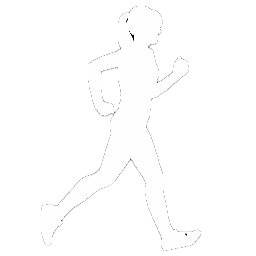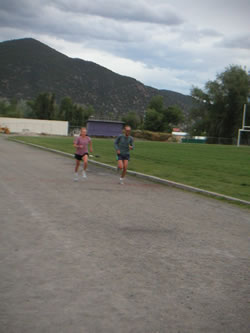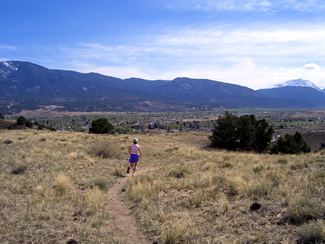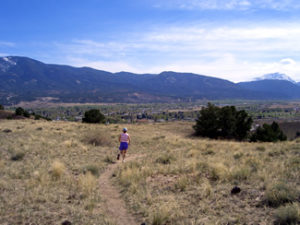If the recent snow and ice and cold have you wondering where and how to safely exercise, here are some tips:
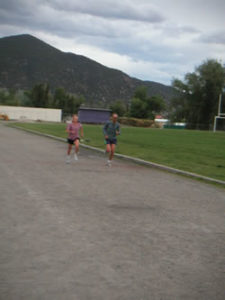
Get out of town. The cars pack the snow before plowing in town. Less cars do so out of town, so when the roads are plowed they get down to more pavement. Thus there is less hardpack and ice on plowed roads out of town.
Get to dirt. Plowed roads that are dirt always get dirt/gravel mixed into the snow when plowed, so they melt faster.
Screw your shoes. Get an old pair of shoes and put in some ¼ to 3/8 inch long size 4 or 6 hex head sheet metal screws into the outsoles. At least 4 on the perimeter of the forefoot and at least 2 on the sides of the heel. These bite well into hardpack snow and ice and help prevent falls and slips. (Note: do not wear these inside on your fine floors). These can take sections of pavement also. Do not use on air or gel midsoles. If you get short enough screws and position them on the perimeter they will not poke through into your feet.
Screw the Shoes II. Go xc skiing, snowshoeing or swimming instead of running.
Run for the rough. Avoid putting your foot down on shiny, smooth snow/ice, as these surfaces tend to be much slicker than snow or ice that is not smooth or flat and has been disturbed.
Go up. Cold air sinks, so the air may be markedly warmer at a higher elevation on cold mornings. Running uphill warms you faster, and the air can be warmer at the top of Tenderfoot Mtn. than in town.
Land gently. Slow down and land flat-footed on surfaces you think may be slick. You want to maximize the contact area of your entire sole, instead of landing on the outer edge of your heel or the ball of your foot. Keep your foot under your knee and center of gravity directly over your foot.
Note: Just after the storm, the Tuesday speed work group did fast 800 meter intervals without touching snow on spiral drive using these tips. Four people showed up for the marathon training (at –2 degrees) and used these ideas to survive comfortably.
